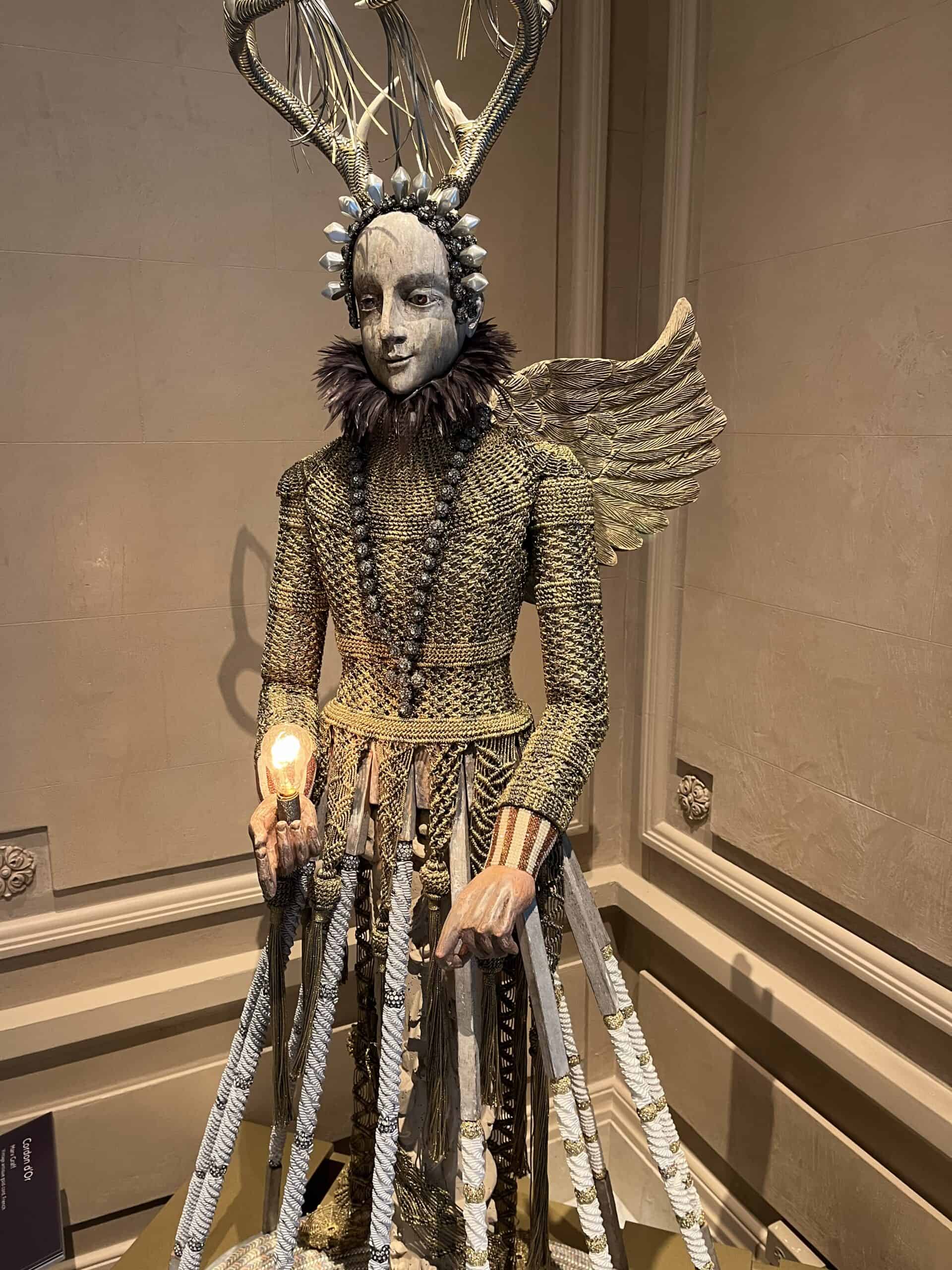Recently I was driving through an older section of Kansas City, Missouri when a neighborhood suddenly emerged, lined with homes from the Queen Victoria era. The mansion in the center of the block had a sign publicizing that it is the Kansas City Museum.

I parked along the tree-shaded road, and as I stepped out of my car, I felt as if I were receding through a passageway of time. Up the steps and through massive, heavy doors I entered a palatial, golden antechamber.
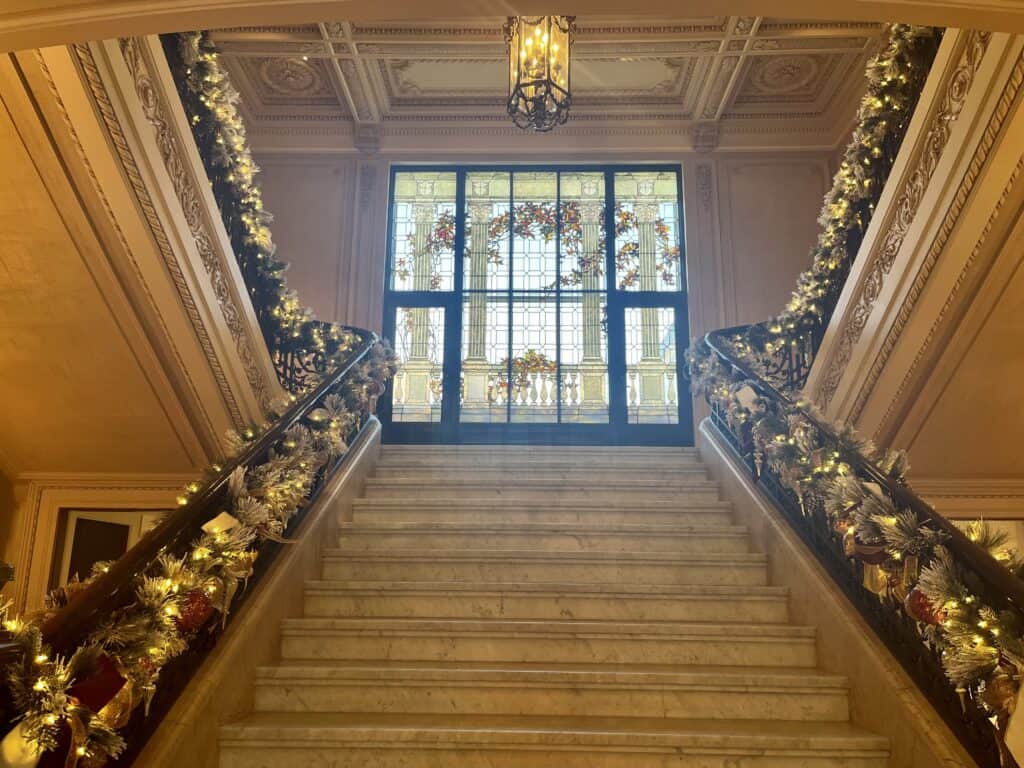
Guests can explore each of the 4 floors on their own and the museum is free (with an option to donate). This is my favorite type of museum. I like to go at my own pace, and know that there are staff readily available to answer my innumerable questions. I quickly learned that the mansion was built in 1910 by Robert A. Long, a lumber baron. He titled this home “Corinthian Hall”. It was the first million dollar home in Kansas City. But Robert’s beginnings were meagerly. He grew up on a farm in Kentucky, and even as a youth, he labored long hours in the fields. Throughout the rest of his life, he never shed the compulsion for hard work. Even on his own wedding day, he immediately returned to work as soon as the vows were completed.
It was in Kansas City that Robert met his wife. He had moved here in 1873 as a 22 year old. He took a job in the lumber business, and by his persistent internal drive to work, he eventually established his own lumber company, the Long Bell. Due to the intersection of the railroads in the middle of the country, it was the ideal place to ship logs in every direction. Long Bell soon became the largest lumber company in the nation.
Robert’s wife, Ella, was from a similar childhood as Robert’s: paupered. Her mother was a widow with 8 chidren in Pennsylvania. She moved her family to Kansas City hoping for an enhanced life for them all. Little did she realize what would come from that fortuitous move.
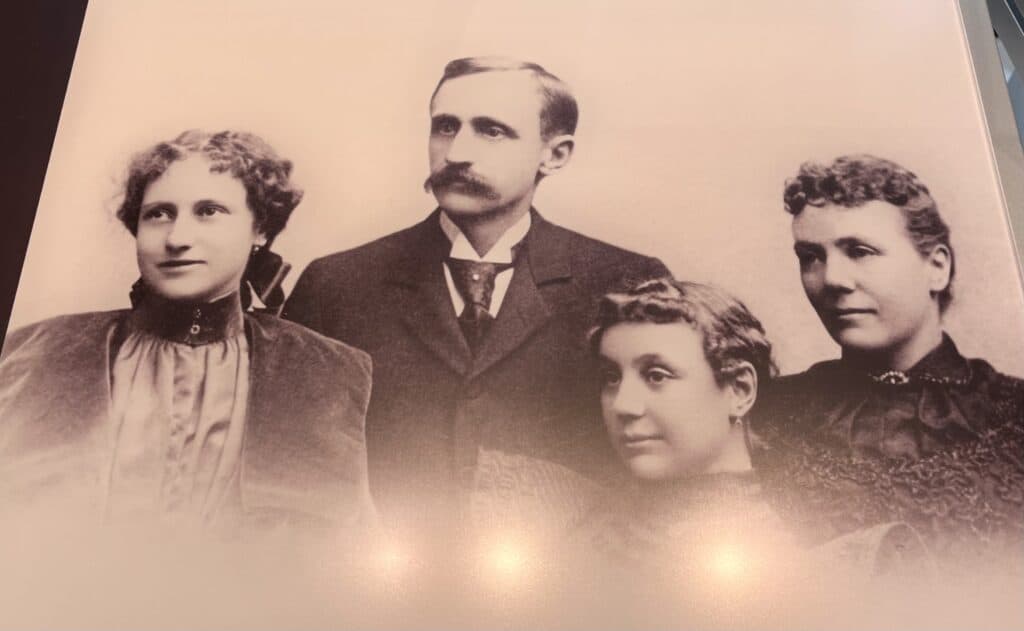
Robert and Ella had two daughters. They were not only a notable family, but an admirable one. Robert treated his family to the largess of that era.
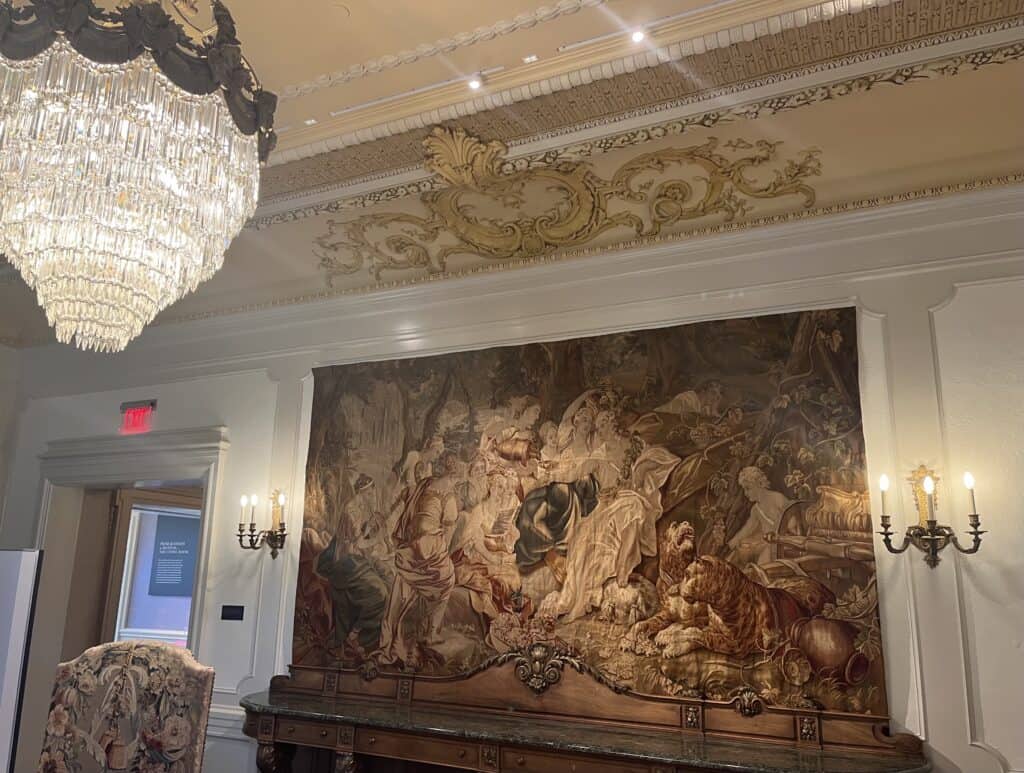
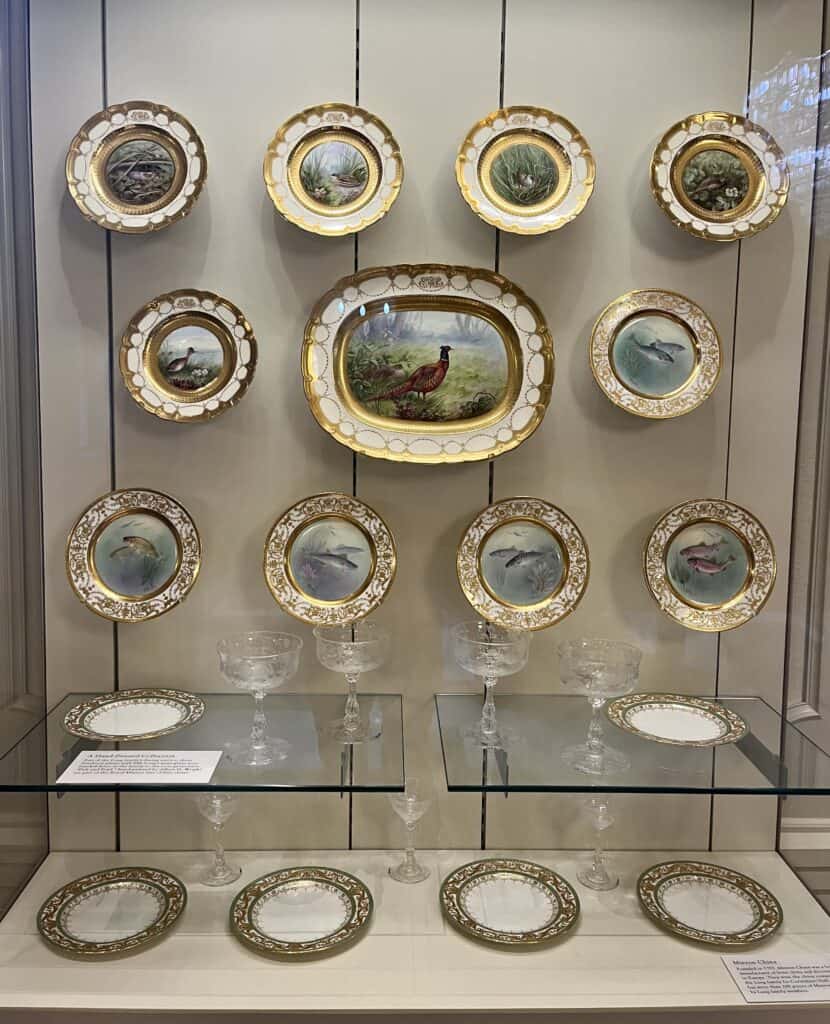
The newspaper of that time, the Kansas City Star, described the Long dining room as a depiction of “economic growth and excesses of the Guilded Age”.
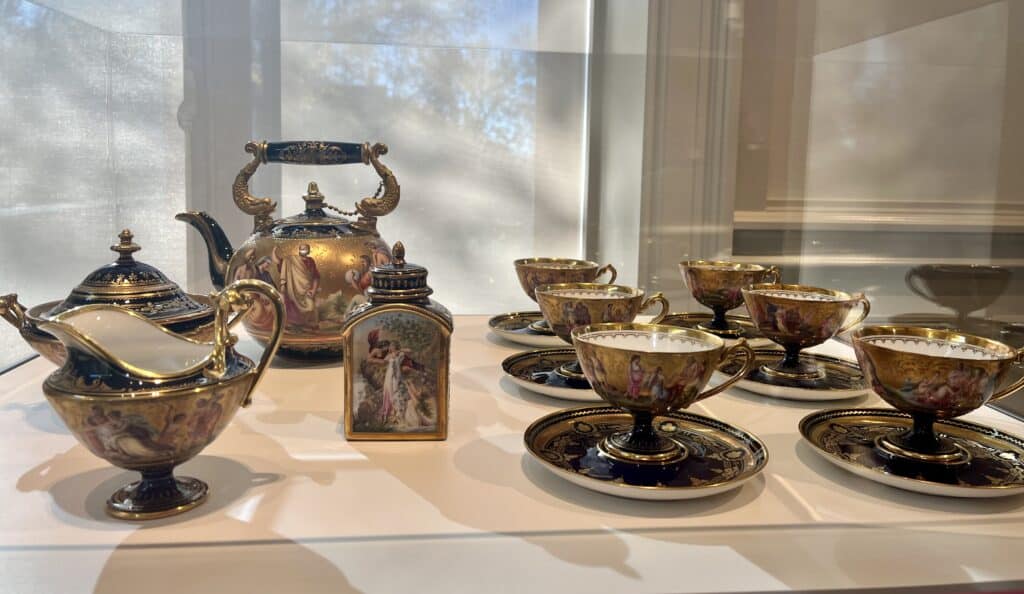
The family picked up this bone china tea set while on a Grand Tour of Europe in 1910. Each piece has a hand-painted scene from classical mythology. No doubt the Longs enjoyed the fruits of their labor. They employed a house staff of 24.
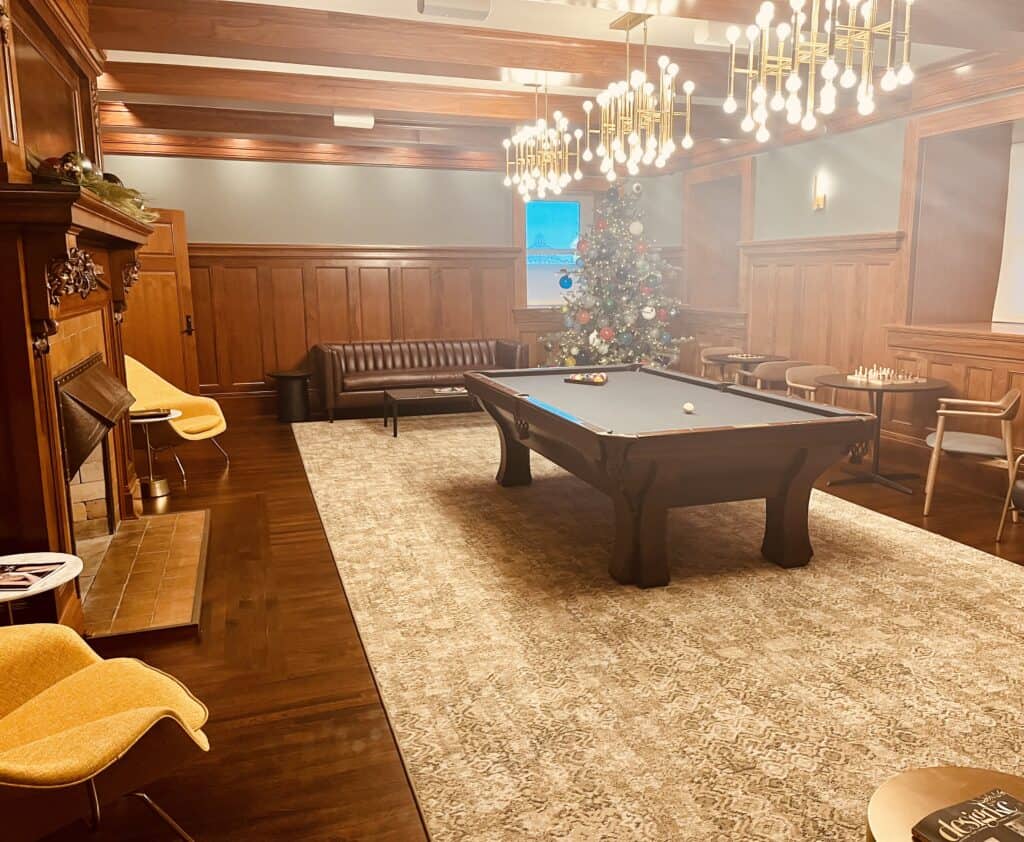
The home includes a Billiard Room, and other entertainment rooms.
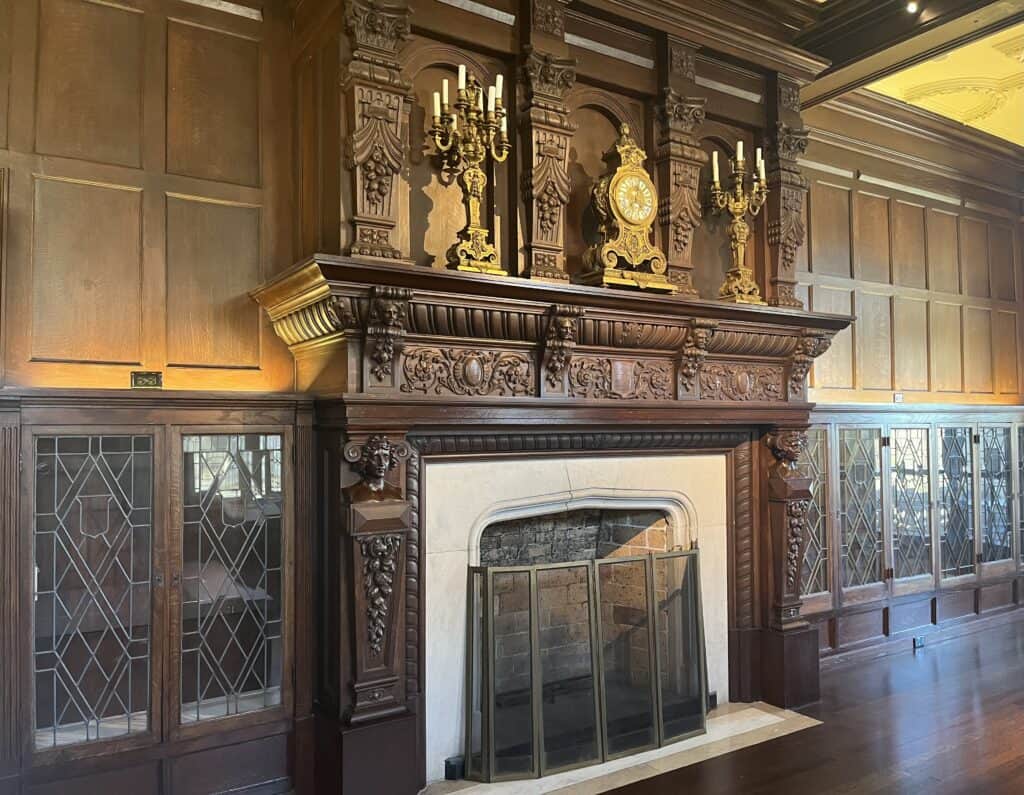
I particularly liked the stately library, because as a friend recently told me — we are “voracious readers, first class”. So, I am always most at home in a library or bookstore. I lingered in this room imagining the pleasure experienced in this setting, surrounded by books, in a comfy chair, in front of a glowing fire. A museum is well-crafted that can exude an authentic sense of what you are viewing.
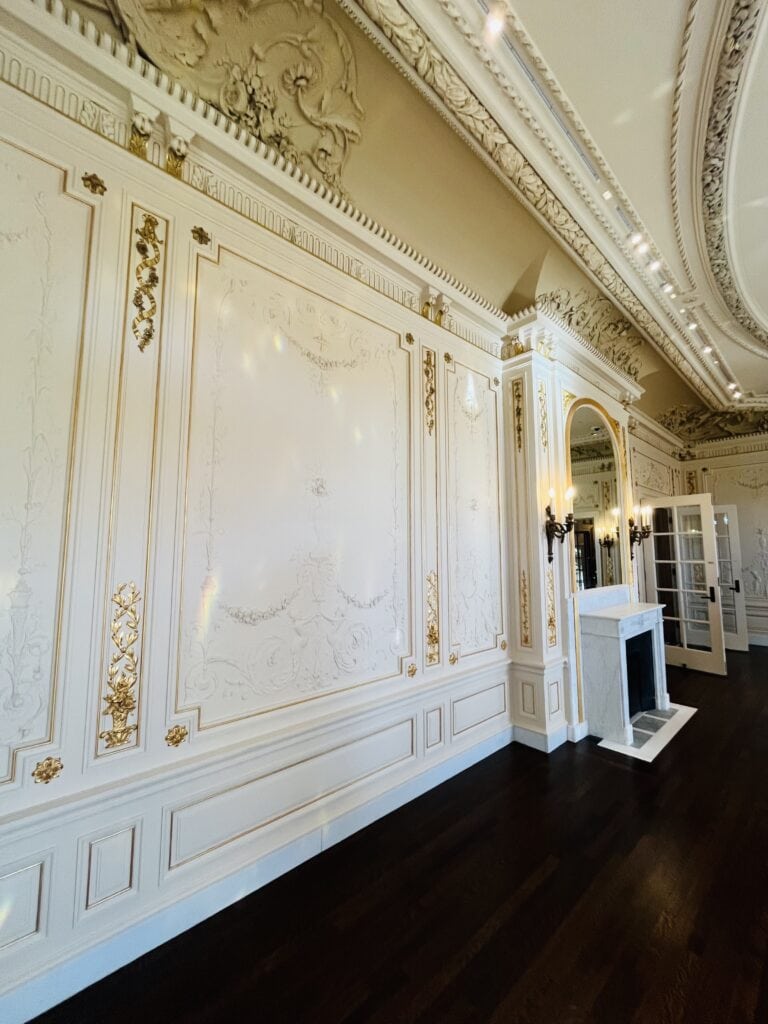
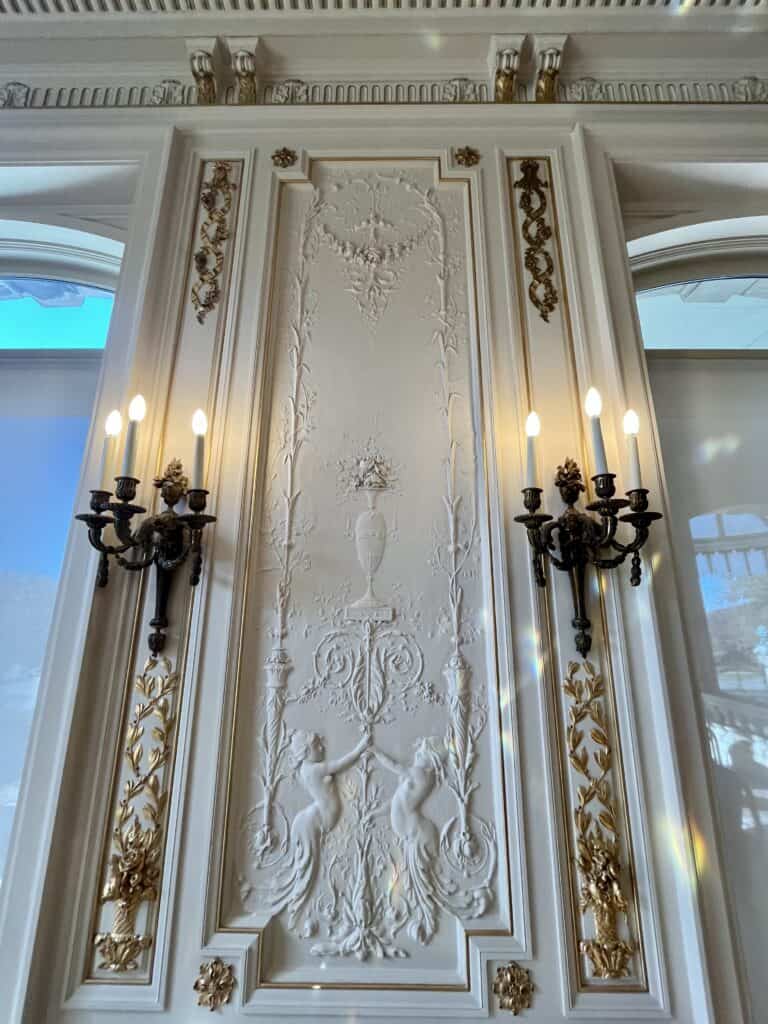
Even the hallways feel elegant. The Longs surely lived a luxurious life, but they also lavished millions on others. They were always generous philanthropists, due to their religious beliefs of using their lives to serve and help people. Their family church, of which they were benefactors, still exists nearby — the Independence Boulevard Christian Church.
As Long’s lumber company began depleting lands of their trees, he conscientiously began a reforestation project. He was a leader in conservation, as the philosophy of the industrial age then was to use and abuse resources.
His humanitarianism went even further as he began providing for the families involved in his lumber business. In the state of Washington, Robert built a miniature town for his employees: with homes, a school, a library, and a church.
Long was so generous that he gave away most of his fortune. Due to the economic downturn and his generous benevolence, his fortune went from $40 million to just under $1 million in 10 years. Those who knew the Long family personally said “there were no skeletons in their closets.” These are the admirable ones. The ones who live life well.
Come to the museum and receive heartening inspiration. These are lives to emulate. The museum also presents many other stories of Kansas Citians who will touch and warm your heart.

